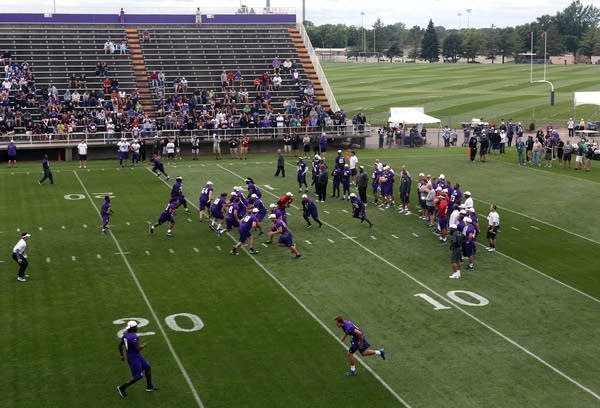Vikings plan for more outreach with training camp leaving Mankato

The Vikings run plays during their first day of training camp in Mankato on Friday, July 26, 2013.
Jeffrey Thompson for MPR News 2013
Go Deeper.
Create an account or log in to save stories.
Like this?
Thanks for liking this story! We have added it to a list of your favorite stories.


